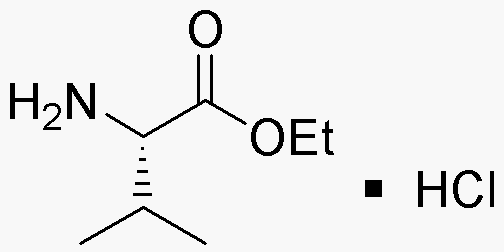L-Valine ethyl ester hydrochloride is widely utilized in research focused on
- Pharmaceutical Development: This compound serves as a key intermediate in the synthesis of various pharmaceuticals, particularly those targeting metabolic disorders and muscle recovery.
- Nutrition Supplements: It is commonly used in dietary supplements aimed at enhancing athletic performance and muscle growth, providing a source of branched-chain amino acids (BCAAs).
- Biochemical Research: Researchers utilize it to study protein synthesis and metabolic pathways, helping to unravel complex biological processes.
- Cosmetic Formulations: The compound is incorporated into skincare products for its moisturizing properties and ability to support skin health, appealing to the beauty industry.
- Food Industry: It can be used as a flavoring agent or nutritional enhancer in food products, catering to consumers looking for health benefits in their diets.
General Information
Properties
Safety and Regulations
Applications
L-Valine ethyl ester hydrochloride is widely utilized in research focused on
- Pharmaceutical Development: This compound serves as a key intermediate in the synthesis of various pharmaceuticals, particularly those targeting metabolic disorders and muscle recovery.
- Nutrition Supplements: It is commonly used in dietary supplements aimed at enhancing athletic performance and muscle growth, providing a source of branched-chain amino acids (BCAAs).
- Biochemical Research: Researchers utilize it to study protein synthesis and metabolic pathways, helping to unravel complex biological processes.
- Cosmetic Formulations: The compound is incorporated into skincare products for its moisturizing properties and ability to support skin health, appealing to the beauty industry.
- Food Industry: It can be used as a flavoring agent or nutritional enhancer in food products, catering to consumers looking for health benefits in their diets.
Documents
Safety Data Sheets (SDS)
The SDS provides comprehensive safety information on handling, storage, and disposal of the product.
Product Specification (PS)
The PS provides a comprehensive breakdown of the product’s properties, including chemical composition, physical state, purity, and storage requirements. It also details acceptable quality ranges and the product's intended applications.
Certificates of Analysis (COA)
Search for Certificates of Analysis (COA) by entering the products Lot Number. Lot and Batch Numbers can be found on a product’s label following the words ‘Lot’ or ‘Batch’.
Numéro de catalogue
Numéro de lot/série
Certificates Of Origin (COO)
This COO confirms the country where the product was manufactured, and also details the materials and components used in it and whether it is derived from natural, synthetic, or other specific sources. This certificate may be required for customs, trade, and regulatory compliance.
Numéro de catalogue
Numéro de lot/série
Safety Data Sheets (SDS)
The SDS provides comprehensive safety information on handling, storage, and disposal of the product.
DownloadProduct Specification (PS)
The PS provides a comprehensive breakdown of the product’s properties, including chemical composition, physical state, purity, and storage requirements. It also details acceptable quality ranges and the product's intended applications.
DownloadCertificates of Analysis (COA)
Search for Certificates of Analysis (COA) by entering the products Lot Number. Lot and Batch Numbers can be found on a product’s label following the words ‘Lot’ or ‘Batch’.
Numéro de catalogue
Numéro de lot/série
Certificates Of Origin (COO)
This COO confirms the country where the product was manufactured, and also details the materials and components used in it and whether it is derived from natural, synthetic, or other specific sources. This certificate may be required for customs, trade, and regulatory compliance.


